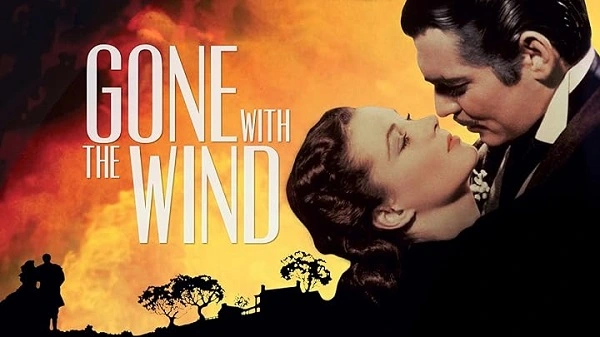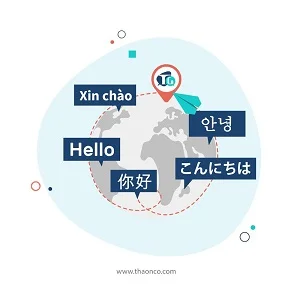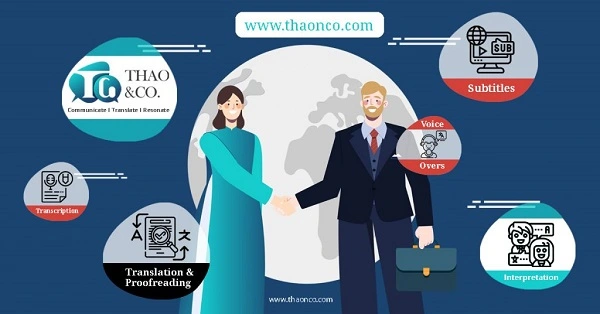The world of cinema undergoes rapid evolution, characterized by the emergence of “blockbuster” hits that captivate and enchant audiences across the globe. Movie translation is pivotal in breaking down language barriers within this dynamic context, bringing cinematic masterpieces closer to an international audience.
Movie translation is increasingly regarded as a critical factor in a movie’s success when entering new markets. We invite you to read the article below to better grasp this critical aspect of the industry!
A movie is a complete cinematic masterpiece conveyed through a series of actions and pictures born from advanced technology and technical prowess. It exemplifies the seamless blend of stunning script, direction, actors, sound, visuals, editing, and more.
Today, movies are categorized into numerous genres that portray a distinct thematic essence, including romance, science fiction, comedy, and horror. Each genre appeals to a specific audience, catering to their personalities, interests, and traits. As a result of this rich diversity, movies may captivate audiences on a global scale.
Movies possess the unique ability to tell stories that can captivate and resonate with people universally; however, without the art of movie translation, the universal appeal of the “7th art form” can be elusive for worldwide viewers.
So, what is movie translation? Movie translation is a meticulous process that involves converting an entire movie’s content from its original to the target language. This intricate undertaking encompasses various elements that constitute the cinematic masterpiece. These elements include translating movie titles, dialogues, subtitles, annotations, and more. That said, the true essence of movie translation is only achieved when all these components are accurately and faithfully translated.

Movie translation is significant as it establishes a profound connection with moviegoers worldwide through each translated line and resonating voice overs. To fulfill this noble “mission,” movie translation employs various specialized types to cater to specific needs. Here are the commonly employed translation services in the movie industry.
Subtitles are a vital component of movie translation, providing the translated text of character dialogues as floating captions on the screen. This kind of movie translation enables the audience to immerse themselves fully in the movie’s “authenticity.” With subtitles, viewers can still hear the characters’ original language dialogue while simultaneously understanding and engaging with the movie through the translated subtitles in their language.
“Crossing the 1-inch subtitle threshold reveals a world of countless cinematic masterpieces”
(Director Bong Joon Ho)
To master the inherent potency of subtitles, the dedicated artisans, known as translators, must meticulously navigate the intricate art of movie translation. This precision is paramount because even a single misstep in translating a subtitle can profoundly influence the viewer’s cinematic experience.
Precision is essential in movie subtitling as translators must meticulously balance the word count within each subtitle line, adhering to specific limits while preserving the essence of the original dialogue. For instance, on platforms like Netflix, the standard limit is 42 characters per subtitle line.
Accordingly, if the translator prioritizes character count over dialogue substance, the resulting subtitles may fail to represent their original meaning. Overly long subtitles, on the other hand, may divert viewer’s attention away from the movie itself, reducing their overall enjoyment. Consequently, the mission of subtitle translators in movie translation transcends more than mere context and cultural alignment as it encompasses balancing character limits per subtitle line and the faithful conveyance of content and emotional depth.
Read more: Movie Subtitle Translation
Narration is a form of movie translation involving the utilization of one or two voices (typically a male and a female) to deliver all the translated dialogue seamlessly integrated into the movie’s narration. This method proves to be a time and cost-saving solution compared to dubbing, and it finds frequent application in the translation of documentaries, autobiographical movies, and entertainment shows.
Usually, the voice over or narration is synchronized in parallel with or slightly delayed, around 2-3 seconds, compared to the original dialogue. Simultaneously, the original character dialogue volume is lowered to highlight the narration.
Some argue that movie narration dilutes the genuine emotions conveyed by the characters. However, it’s worth noting that many renowned movies like “Shakespeare in Love” and “Gone with the Wind” continue to captivate viewers of all ages, partly thanks to narration.

Within this specific genre of movie translation, the pivotal element to prioritize is the impeccable quality of dialogue translation. It must be short to meet time limits while also conveying conciseness and profundity. The narration must be both motivational and capable of conveying various emotions in nuanced ways to effectively transmit the movie’s message.
Unlike voice overs or narration, dubbing, sometimes known as “language / voice replacement”, is a highly favored translation technique that replaces the original dialogue with performed lines in the target language. After the translators finish translating the dialogue, voice actors re-record the lines and seamlessly incorporate them into the movie. These new character voices replace the originals and are synced to match the actors’ lip movements in the movie. Dubbing is commonly employed in television dramas, movies, animations, and more.
Thanks to the employment of dubbing, moviegoers experience a profound sense of authenticity, as if the actors are engaged in authentic discourse in the target language. This level of authenticity is based on the meticulous alignment of syllable equivalency during the translation and dubbing processes. For example, if an actor’s original dialogue contains nine syllables, the translated and dubbed dialogue must artistically reflect this count. Each word within the translated dialogue maintains a precise balance with no redundancy or deficiency; only in this way can a movie translation artfully express to the viewer the characters’ thoughts and sentiments purely and genuinely.
Furthermore, a paramount challenge in movie translation via dubbing is the precise selection of voice artists whose vocal qualities harmoniously resonate with the characters depicted on screen. A movie that has been flawlessly dubbed gains increased affection and resonance among its local audience.
An illustrative case in point is the timeless Korean sitcom, “High Kick 2.” This hilarious comedy from the land of kimchi has become an “enduring favorite” in countless hearts of Vietnamese families. For the majority of Vietnamese viewers, the dubbed rendition of “High Kick 2” is the preferred choice as the dubbed voices of characters such as Hwang Jung Eum and Jung Hae Ri infuse the humor with a charm that connects with the Vietnamese audience on an intimate level.
Recognizing the importance of movie translation in the success of a movie, Thao & Co. Translation Company handles screenplay translation before providing high-quality subtitles, narration, or voice over services with the participation of professional and experienced native voice actors tailored to your preferences. We aim to offer top-notch movie translation and voice over services, elevating the excellence of your cinematic masterpiece.

A great movie might be adored by viewers in one country but fail to connect with those in another. The reason often lies in the translation not genuinely aligning with the emotions and culture of the local audience. So, how can a movie translation touch the audience’s emotions? This is the foremost question movie-makers and producers ponder when introducing their creative offspring to a new market.
True art is the “art of touching human souls,” meaning it is directed towards people. Each movie is a sincere work of art, with its ultimate target being the audience. Consequently, movie translation must prioritize the audience as its central focus to craft the most fitting translations.
To effectively convey a movie’s message to the audience in a natural and intimate manner, a translator must grasp the specific preferences, personalities, and language nuances of the target audience the movie is directed towards. For example, when translating a movie for Gen Z, a language style infused with humor, trending language, slang, and wordplay is the key. However, this style might not be ideal if the intended audience belongs to Millennials.
The Korean movie “Honey Sweet” has sparked a sensation in Vietnam as the translated version gained immense popularity among Gen Z viewers for its skillful adaptation of the language used by this generation. The movie’s subtitles have been skillfully “Vietnameseized” to a high degree by embracing the current trend of popular slang phrases among Vietnamese Gen Z like “No more love, I’m exhausted,” “kiwi kiwi” (roughly translated as “So delicious”), and “flex” (“Showing off”). This highlights the significance of understanding the target audience in translation, as it is the crucial first and most vital step in creating the highest-quality translated version of the movie.
Translating a movie is a distinctive craft that differs from news translation or specialized document translation since, beyond ensuring linguistic accuracy, movie translators must also creatively shape linguistic items into a translation that matches the intended medium, be it subtitles, voice over, or narration. Each type of translation has specific requirements, both in style and in expressing the spirit or “soul” of the masterpiece.
Translators in the field of movie translation occasionally encounter “untranslatable” terminology. In such cases, the translator must skillfully use their knowledge, experience, and translation methodologies to craft the most appropriate rendering for the intended audience.

Culture significantly impacts human perception; as a result, adding subtitle localization into translations is the most successful way to engage with audiences in new markets.
Read more: Everything you need to know about Localization
The cinematic language conveyed through subtitles is a complex fusion of various components, encompassing more than just vocabulary and grammar. Aside from emotions and feelings, culture plays a pivotal role in shaping this “cinematic language” within a movie.
For subtitles to authentically connect with the target culture, the translator must profoundly understand both the source and target cultures. The translation should, in particular, expertly incorporate native terms, such as slang, idioms, and wordplay, to create an artful fusion that “blends” perfectly with the cultural nuances of the target language.
In the movie “Hometown Cha-Cha-Cha,” the translator shows exceptional ingenuity in localizing the subtitles in a very Vietnamese style, echoing the message of the male lead, Doo Shik’s, emotional verse for Hye Jin:
“Vốn dĩ số ba là số đẹp đấy
Giống như mì ba miền, ba ván thắng hai
Có anh ba Hưng vốn thiệt nông dân”
This localized Vietnamese version can be roughly translated as follows:
“The number three exudes a natural charm
Just as three-region noodles, two victories in three games.
And there’s Mr. Hung, a renowned farmer on our farm”
By incorporating Vietnamese-style subtitles featuring expressions that are commonly understood by Vietnamese people such as “three region noodles” and “Mr. Hung,” the film promptly became relevant and earned the affection of its Vietnamese audience.
Every piece of art inherently reflects the essence of the time it originates, and cinema is no different. Consequently, translators must consider maintaining a contemporary touch in movie translation as the “bridge” that connects cinematic masterpieces with the audience.
The modernity in the movie translation primarily depends on the translator’s ability to select and deploy language that resonates with the preferences of the contemporary audience. Furthermore, the translator can fine-tune era-specific features inside the movie, aligning them with the contemporary cultural, economic, and political environment.
In addition, contemporary relevance can also encompass the utilization of cutting-edge recording, narration, and voice over technology and software. This adoption ensures that movie translation meets the highest standards per client’s requests.
As previously stated, maintaining the appropriate length of a character’s dialogue is pivotal when translating a movie through subtitles, voice overs, narration, or dubbing. Adhering to defined standards for dialogue length is a way to ensure the quality of the translation and improve the overall movie-watching experience for the audience.
Excessively long movie subtitles might distract the audience’s attention away from the visual and auditory delights. On the other hand, prolonged dialogue dubbing can erode the authenticity of natural conversation. It’s also worth noting that dialogue is one of the most valuable elements of a movie. A well-crafted dialogue translation has the power to captivate viewers, prompting them to pause and reflect profoundly.
Hence, a movie translation achieves top quality only when it perfectly fits the requirements of both form and length while faithfully transmitting the very essence, or “soul”, of the movie. To keep this delicate balance, movie translators must be seasoned native linguists with a wealth of expertise from numerous successful movie translation projects.

The core mission of movie translation is to make the movie “shine” in its new language while retaining its original “soul.” Language, more often than not, can be a formidable barrier, preventing a movie from reaching a global audience; however, a skilled translator bridges the linguistic difference. The translators must be expert linguists to produce exceptional movie translations.
Movie translation projects at Thao & Co. are routinely entrusted to native linguists, each with a wealth of experience performing varied translation undertakings to ensure that the final product meets the highest criteria in terms of length, alignment with the target audience, and effective localization. Thao & Co. Translation Company is committed to maintaining transparency and clarity regarding project implementation expenses during our project execution process.
Thao & Co. provides a comprehensive range of movie translation services, including movie subtitles, voice overs, and dubbing, all infused with cutting-edge technologies and carried out by true professionals. We are committed to providing you with professional, high-quality Subtitles and Voice Over services.
Please visit Thaonco.com to explore our translation services, or go to our Get A Quote page to connect with us today!